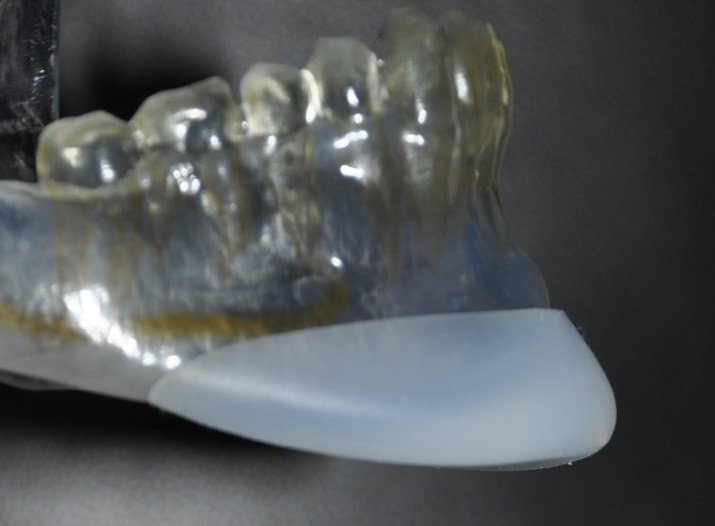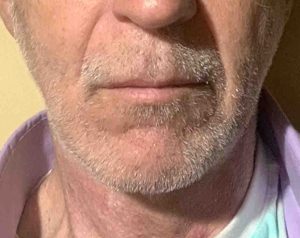Background: In chin augmentation surgery there are a wide variety of chin implant styles and sizes. The vast majority of standard chin implant options provide a horizontal augmentation effect which for most patients works just fine. The one exception is when a vertical chin deficiency exists which is the most underdiagnosed dimensional chin deficiency. While it is true that some small amount of vertical lengthening is achieved with a horizontal chin implant due to soft tissue chin pad rollout that length effect is restricted to a millimeter or two.
When significant vertical chin length is needed the options become either a vertical opening sliding genioplasty or a vertical lengthening chin implant. As a general guideline if small smaller amounts of vertical lengthening are needed (<7mms) then the implant can be successful. If more significant vertical lengthening needs exist then the bony genioplasty is preferred as the soft tissue chin pad does not provide an expansion limitation.
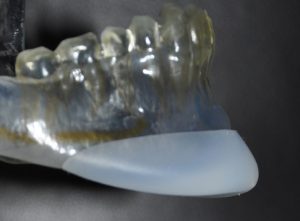
Case Study: This male had a small chin implant placed years ago which did provide some improvement over no chin augmentation at all but has more room for additional augmentation. The patient was specifically interested in vertical lengthening even if no further horizontal augmentation was achieved.
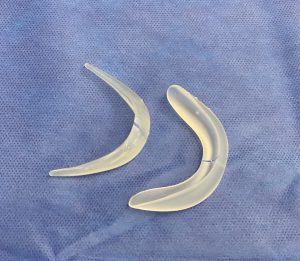
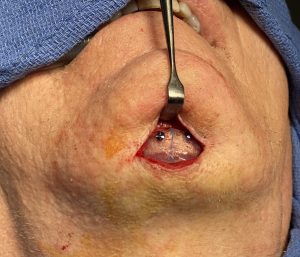

Choosing between different styles of chin implants can be confusing since they are often named after surgeons which does little to indicate what their intended augmentation effect is. This is further muddied by the reality that the aesthetic differences in their effects are slight as they all produce a horizontal augmentation effect. One exception is that of the vertical lengthening chin implant which clearly indicates what it is intended to do. While it provides both a horizontal augmentation effect as well as a vertical one, it can be intraoperatively modified so that its effects is largely vertical with little horizontal push on the soft tissue chin pad.
Case Highlights:
1) An anatomic chin implant provides horizontal projection but no significant vertical lengthening.
2) Replacement of small anatomic chin implant with a small vertical lengthening chin implant creates an improved 45 degree chin augmentation effect.
3) While the vertical lengthening chin implant provides a combined horizontal and vertical augmentation effect it can be modified to reduce the horizontal projection and have a primary vertical lengthening effect.
Dr. Barry Eppley
Indianapolis, Indiana

